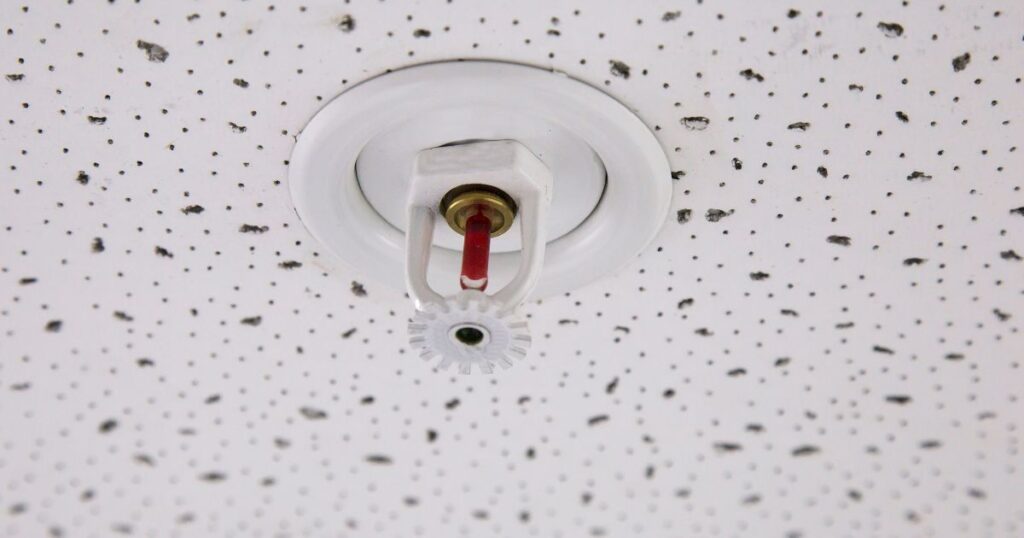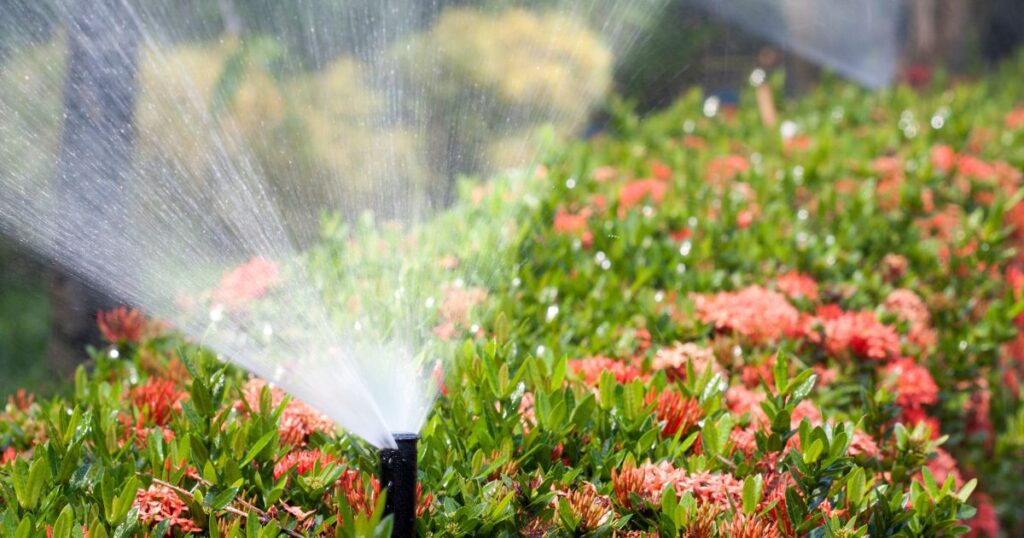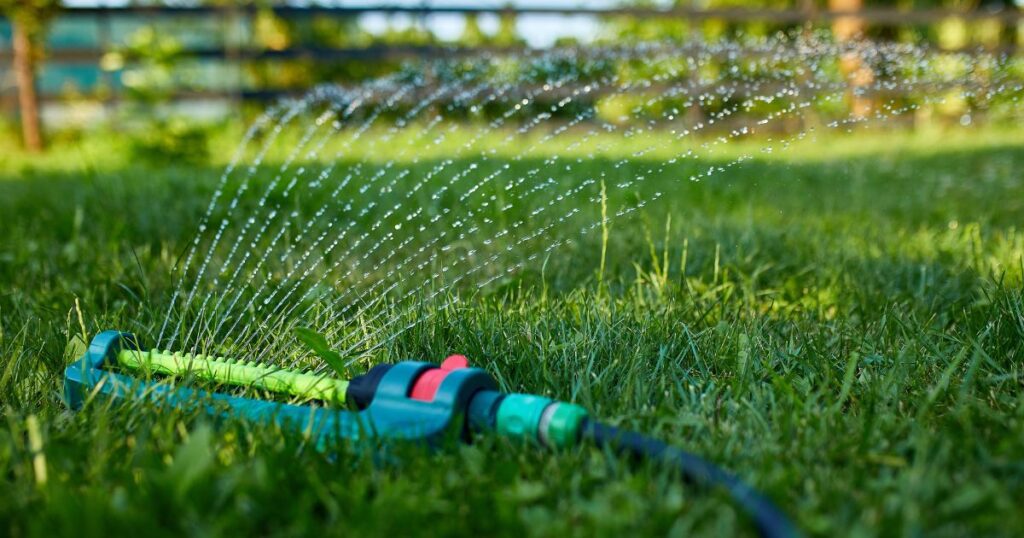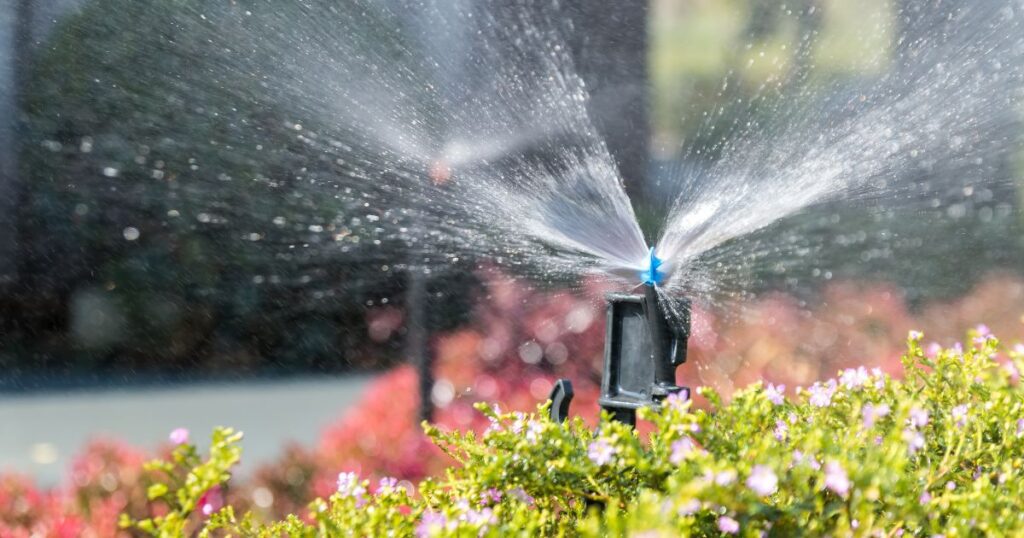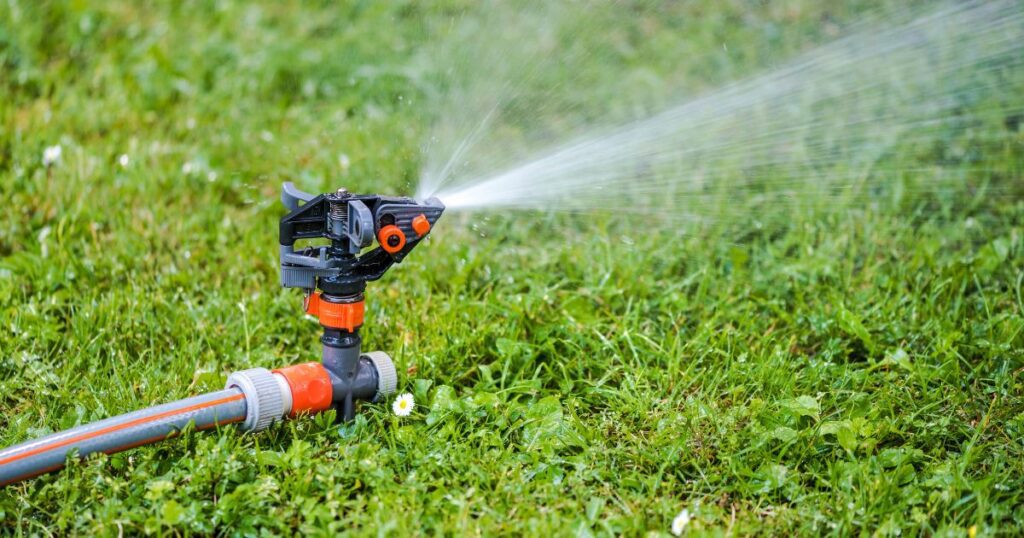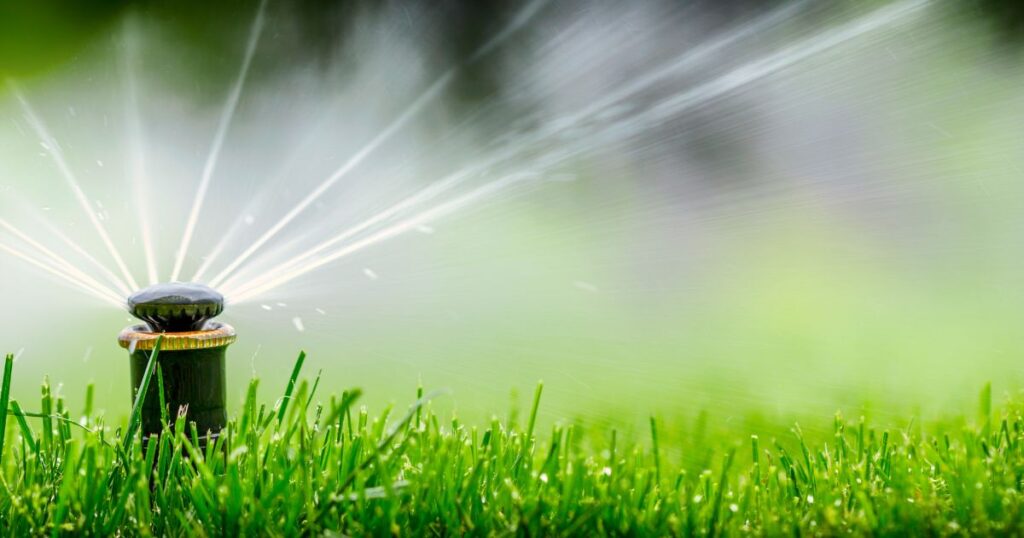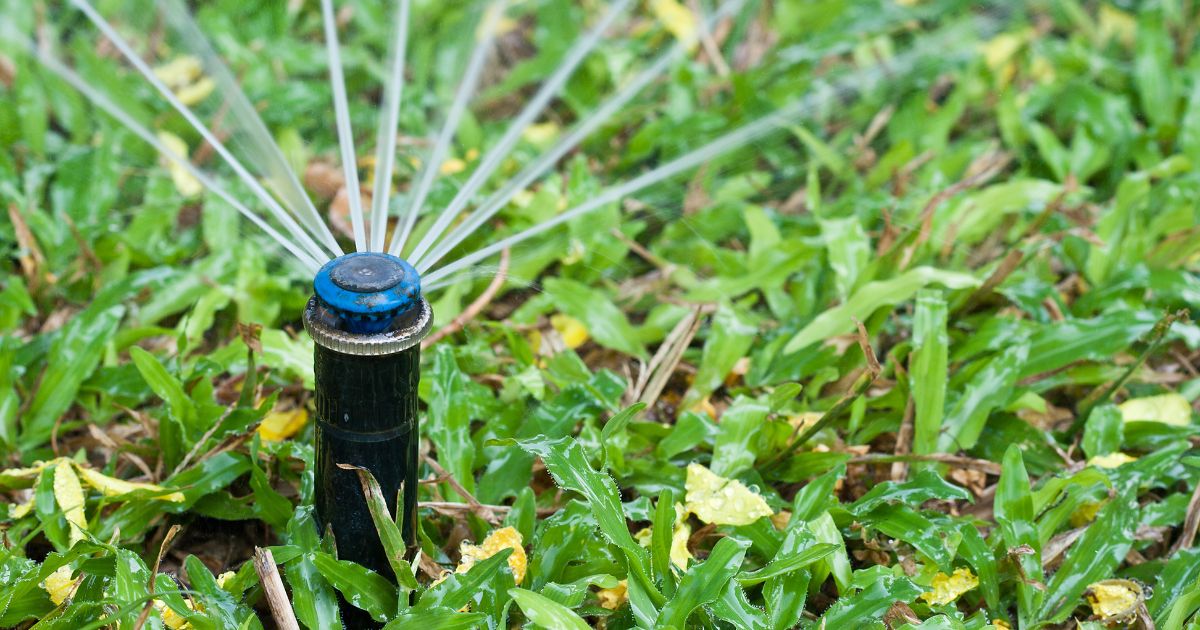
Have you ever wondered how deep those sneaky sprinkler lines hide beneath your yard? Well, prepare to dig into the depths of sprinkler secrets! In this article, we’ll uncover the truth and reveal just how deep are sprinkler lines buried. Get ready to unearth some fascinating knowledge and quench your curiosity about the underground world of sprinkler systems. So, grab your shovel, and let’s dig in!
Sprinkler lines are typically buried at a depth of 6 to 8 inches underground. However, this depth may vary depending on factors such as local building codes, climate, and soil conditions. It’s important to consult with professional or local authorities to ensure you meet the specific requirements for your area.
The Importance of Sprinkler Systems
Sprinkler systems are critical for maintaining the health and beauty of your lawn or garden. They provide water consistently to keep plants hydrated and lush. Without proper irrigation, lawns can quickly become dry and brown, making them unattractive and unhealthy.
In addition to keeping your lawn looking great, a well-designed sprinkler system also saves water by delivering precise amounts of water where it’s needed most. This helps conserve our planet’s precious resources while also reducing your monthly water bill.
Brief Overview of Sprinkler System Components
A typical sprinkler system consists of several main components:
- Control Panel: This is the brains behind your sprinkler system that allows you to set watering schedules.
- Sprinklers: These are the devices that spray water onto your lawn or garden.
- Pipes: These carry water from the source to the individual sprinklers in your yard.
- Valves: These control the flow of water through each zone of your yard.
- Sensors: Optional sensors can be installed to detect rainfall or moisture levels in the soil to prevent overwatering.
How Deep Are Sprinkler Lines Buried
The depth at which sprinkler lines are buried varies based on several factors. These factors include climate and soil type, the type of system installed, and local building codes and regulations.
Factors Affecting Sprinkler Line Depth
Climate and Soil Type
The climate and soil type in your area play a significant role in determining how deep sprinkler lines should be buried. For example, if you live in an area with sandy or loamy soil, you may need to bury your lines deeper than you would if you lived in an area with dense clay soil.
In areas with freezing temperatures, sprinkler lines must be buried below the frost line to avoid damage from ground heaving caused by frost. In contrast, in areas with high water tables or flood zones, shallow burial depths may be required.
Type of Sprinkler System
The type of sprinkler system installed also affects the depth at which lines are buried. Drip irrigation and misting systems require shallow burial depths compared to traditional spray systems.
Local Building Codes and Regulations
Local building codes dictate the minimum depth at which sprinkler lines must be installed. Failure to follow these codes can result in costly fines or legal issues down the road.
Standard Sprinkler Line Depths
Residential Systems
In general, residential sprinkler systems require shallower burial depths than commercial systems due to their smaller size. For smaller yards, pipes can be buried as little as 6 inches below ground level. For larger yards or commercial properties, pipes may need to be buried up to 18 inches underground.
Commercial Systems
Commercial systems typically require deeper burial depths to accommodate larger pipes and higher water pressure. Pipes may need to be buried up to 24 inches below ground level in some cases.
It is important to note that the depth at which sprinkler lines are buried should also take into consideration existing underground utilities. Hitting a gas line, sewer pipe, or electrical conduit can be dangerous and costly.
Factors Affecting Sprinkler Line Depth
Installing a sprinkler system requires careful planning to ensure that the system functions optimally. One of the most crucial aspects of installation is determining how deep to bury the sprinkler lines. Several factors can affect the depth at which these lines are installed, including climate and soil type, type of sprinkler system, and local building codes and regulations.
Climate and Soil Type
The climate and soil type in an area play a critical role in deciding how deep to install sprinkler lines. In areas with high rainfall or high water tables, it may be necessary to install sprinkler lines at shallower depths than usual.
This is because waterlogged soil can cause issues with drainage, which can affect the performance of your sprinkler system. Similarly, sandy soils may require deeper burial depths than those with clay content since they do not hold water as effectively.
Type of Sprinkler System
The type of sprinkler system you choose also affects the depth at which you should bury your lines. For example, drip irrigation systems typically require shallower burial depths than spray systems since they use small tubes that do not need as much support as larger pipes used in standard spray systems. Misting systems designed for use in greenhouses or other enclosed areas may require surface-mounted pipes instead of buried ones due to their unique design requirements.
Local Building Codes and Regulations
Building codes and regulations vary from region to region, so it’s essential to research local codes before installing a new irrigation system. Some states require that all underground utilities be installed at specific depths for safety reasons, while others prohibit certain types of materials from being used in underground irrigation systems. In some cases, zoning laws may dictate where irrigation systems can be installed on a property or limit how deep pipes can be buried in specific areas.
Other Factors to Consider
In addition to the factors already mentioned, other factors can affect the depth at which you should install your sprinkler lines. For example, if you plan on landscaping your yard extensively, it’s a good idea to consider installing sprinkler lines at deeper depths since they will be less susceptible to damage from roots and other landscaping features. If you live in an area with a lot of underground utilities or sewer lines, it may be necessary to install the sprinkler system at a shallower depth to avoid damaging these essential systems.
RELATED: How To Install Sprinkler Riser Extension
Standard Sprinkler Line Depths
Residential Systems
When it comes to residential sprinkler systems, the depth at which the lines are buried can vary depending on the size of the yard and the water pressure needed. For smaller yards, it is common to see sprinkler lines buried at a shallower depth of around 6 inches. This helps keep installation costs down and makes it easier to access and repair any issues with the system.
However, for larger yards or commercial properties, deeper burial depths are necessary. In these cases, sprinkler lines may be buried up to 12 inches deep.
This is because larger yards require more water pressure for adequate irrigation coverage. Deeper pipes also help protect against accidental damage from lawn equipment or other outdoor activities.
Commercial Systems
For commercial sprinkler systems, deeper burial depths are even more critical due to higher water pressure needs and larger pipe sizes. Typically, these systems have pipes that range in size from 1 inch to 4 inches in diameter. Therefore, they need to be buried much deeper than residential systems.
The standard depth for commercial sprinkler lines is around 18 inches. However, depending on local building codes and regulations or soil composition issues like clay soils that retain moisture longer than sandy soils change, this depth might be adjusted by a few inches.
Considerations for Underground Utilities
Another important factor that affects standard sprinkler line depths is underground utilities such as electrical wires or gas pipelines running beneath a property. Before installing a new sprinkler system, it’s essential first to locate all underground utilities on your property so you can avoid damaging them during installation. If there are existing underground utilities in the area where you plan on installing your new sprinkler system, then you may need special permits or clearance from local authorities before proceeding with installation work.
In general, terms, when utilities are present, sprinkler lines should be buried at least 12 inches deeper than the top of the utility line. Another important consideration is soil compaction which is a process in which soil particles are compressed together, causing them to become denser, leading to a more stable foundation for pipes.
Preventing Damage from Frost
In colder climates, where frost can penetrate the ground and cause damage to underground pipes, it’s essential to bury sprinkler lines deeper than usual. Depending on local regulations and climate conditions, a minimum depth of 12 inches or more may be necessary.
By placing pipes below the frost line (the maximum depth at which soil freezes), you can prevent damage caused by freezing and thawing cycles. This helps avoid costly repairs later on down the line.
Exceptions to Standard Depths
While standard sprinkler line depths exist for a reason, there may be some instances where shallower depths are necessary or preferred, for example, in areas with high water tables or flood zones where deep burial isn’t possible without experiencing drainage problems. Another exception could be the use of specialized systems such as drip irrigation or misting systems that require shallow depths since they do not need high water pressure like traditional irrigation systems.
There might be special cases when other piping infrastructure needs shallower burial, like emergency fire hydrant access piping, that needs to have exposed valves so personnel could turn them off if it was needed. Regardless of these exceptions, though, standard depths are required for most sprinkler systems due to their size and pressure requirements.
Unique Cases & Exceptions to Standard Depths
Areas with High Water Tables or Flood Zones
In areas with high water tables or flood zones, sprinkler lines may need to be buried at shallower depths. This is because deeper burial depths can cause the pipes to become submerged in water, which can lead to damage and, ultimately, failure of the system. In these areas, a shallow burial depth of around 6 inches may be sufficient.
However, it is important to note that even in areas with high water tables or flood zones, other factors, such as local building codes and regulations, must still be taken into consideration. Additionally, the use of specialized backfill material and proper drainage solutions may also be necessary to ensure that the sprinkler system functions correctly.
Specialized Systems such as Drip Irrigation or Misting Systems
Drip irrigation systems and misting systems are often used for specific types of plants or in areas where water conservation is important. These systems require a different type of sprinkler line than traditional sprinkler systems – one that has smaller holes and allows for lower flow rates.
The depth at which these specialized lines are buried depends on a number of factors, including the soil type, slope of the land, and type of plants being irrigated. In general, however, drip irrigation lines are buried relatively close to the surface (around 6 inches), while misting system lines can be buried slightly deeper (around 12-18 inches).
It is important to note that proper installation techniques must still be followed, even for specialized systems. This includes proper backfill material around pipes and ensuring that pipes are properly supported.
Rare Cases Where Shallow Lines May Be Used
While most traditional sprinkler systems require deeper burial depths for optimal performance, there are some rare cases where shallow lines may be used. For example, in areas with extremely rocky soils, it may be difficult or impossible to dig trenches deep enough for standard sprinkler lines. In these cases, shallow lines may be installed using a vibratory plow.
It is important to note that shallow lines are not suitable for all types of properties or sprinkler systems. Shallow lines are more prone to damage from foot traffic and lawn equipment and may not be able to handle the higher water pressure required for commercial systems.
Rarely Known Small Details About Sprinkler Line Depths
The Use of a Vibratory Plow to Minimize Damage to Existing Lawns During Installation
When installing sprinkler lines, it’s important to minimize damage to existing lawns and landscaping. One tool that can help with this is a vibratory plow.
This device uses vibrations to cut a narrow trench in the ground while minimizing soil displacement. The plow creates an ideal environment for laying down pipes without damaging the turf above.
Vibratory plows come in different sizes, depending on the size of the project. They are more efficient than traditional trenching methods because they don’t require large excavation work and can quickly install pipes in tight spaces.
Using a vibratory plow saves time and reduces labor costs associated with manual excavation. It also reduces soil compaction compared to traditional digging methods.
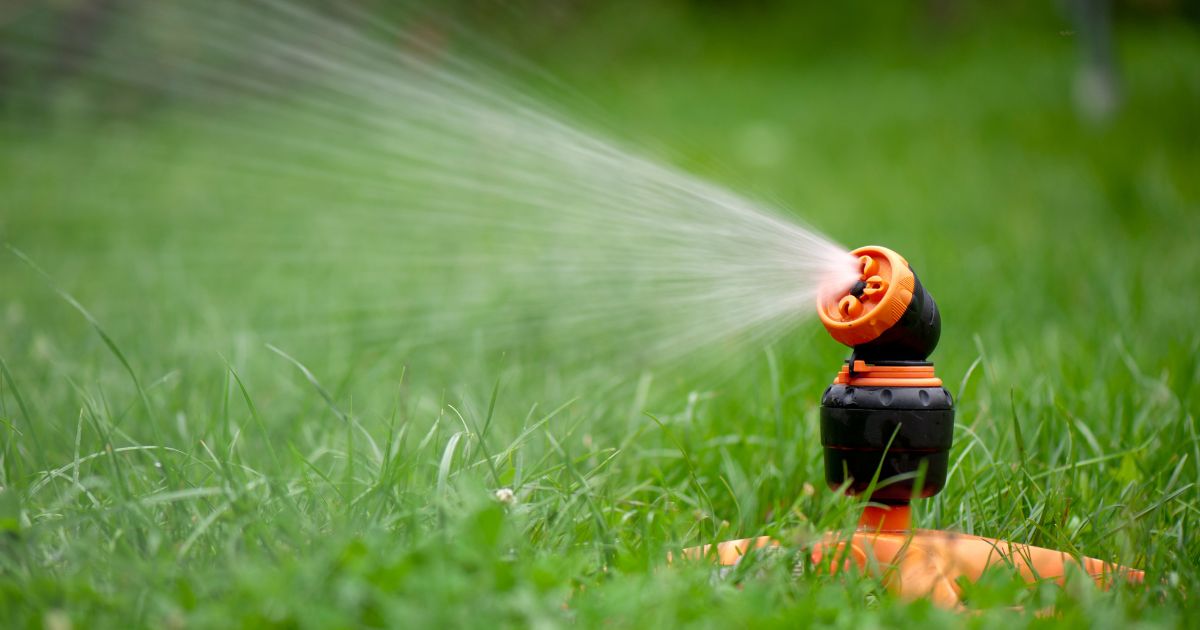
The Importance of Proper Backfill Material Around Pipes
After installing sprinkler lines, it’s essential to backfill trenches correctly. Proper backfilling helps maintain pipe stability, prevents water from seeping into the ground around it, and ensures the longevity of your irrigation system. The type of backfill material depends on local codes and soil conditions but typically includes a mixture of sand and soil or gravel.
The right mix will provide enough support for your pipes without compromising their functionality. Avoid using large rocks or construction debris, as they can damage your irrigation system over time.
The Use of Tracer Wires to Locate Buried Pipes
Locating buried pipes is not always easy, especially when there are no visible markers or records available about their location. It would be expensive to dig up entire sections looking for them, but luckily there is an easier way: tracer wires.
Tracer wires are thin copper cables that run alongside buried pipes during installation. They emit an electronic signal that can help locate and identify pipes underground.
By using a specialized device to detect the signal, you can pinpoint the location of your sprinkler lines quickly. Tracer wires are an excellent investment for property owners because they save time and money in locating any buried pipes during maintenance or repairs.
Why Proper Installation Techniques Matter
Proper installation techniques play a vital role in ensuring the efficient operation of your irrigation system. Poor installation can compromise the longevity of your system, increase repair costs, and lead to costly water damage to your property. By installing pipes at the correct depth, using tracer wires to locate them, and backfilling with appropriate materials, you can ensure that your irrigation system functions properly throughout its lifespan.
It’s not only about getting the job done quickly but ensuring it is done right. Proper installation techniques also decrease soil disturbance during trenching process, which helps preserve soil health
How Technology Has Changed Sprinkler Line Installations
Installing sprinkler lines has come a long way since manual excavation methods were used. With advances in technology like vibratory plows, tracer wire systems have become more efficient than ever before. Newer equipment leads to less disruption of landscapes and reduces labor costs while increasing efficiency which ultimately leads to faster project completion times without compromising quality standards.
New technologies continue emerging that promise significant improvements in sprinkler line installation processes. As technology continues advancing, we should expect even better results from future innovations making installations easier while causing less disruption.
RELATED: How to Find a Sprinkler Head: Uncovering the Hidden
Frequently Asked Questions
How deep down are sprinkler lines?
Sprinkler lines are typically buried 6 to 12 inches below the ground surface to protect them from damage and freezing temperatures.
How deep are sprinkler valves buried?
Sprinkler valves are typically buried at a depth of 6 to 12 inches below the ground surface, similar to sprinkler lines.
How do you bury a sprinkler line?
To bury a sprinkler line, you need to dig a trench of the appropriate depth, place the line inside the trench, and cover it with soil, ensuring it is level and properly supported.
Do sprinkler lines need to be buried?
Yes, sprinkler lines need to be buried to protect them from physical damage and extreme weather conditions. Burying the lines also helps maintain a neat and unobstructed landscape.
What size is the in-ground sprinkler line?
The size of in-ground sprinkler lines can vary, but common sizes for residential systems are 1/2 inch or 3/4 inch in diameter. Commercial systems may have larger diameter lines.
What size is a residential sprinkler line?
Residential sprinkler lines are commonly sized at 1/2 inch or 3/4 inch in diameter, depending on the specific requirements of the system. The size may vary based on the water flow needs and the number of sprinkler heads being supplied by the line.
Conclusion:
After reading this article, it is clear that the depth at which sprinkler lines are buried depends on several factors. Climate and soil type, type of sprinkler system, and local building codes and regulations all play a role in determining the appropriate depth for sprinkler lines.
For residential systems, shallower burial depths may be suitable for smaller yards, while deeper burial depths may be required for larger yards or commercial properties. Commercial systems typically require deeper burial depths to accommodate larger pipes and higher water pressure.
It is important to consider any underground utilities when selecting an appropriate burial depth. Additionally, there are niche subtopics related to sprinkler line depths that deserve attention.
Areas with high water tables or flood zones require special consideration when determining the proper depth of sprinkler lines. Specialized systems such as drip irrigation or misting systems may have different requirements than traditional systems.
There may also be rare cases where shallow lines are used. It is important to properly install sprinkler systems in order to minimize damage to existing lawns during installation and ensure that backfill material around pipes is appropriate.
Tracer wires can also aid in locating buried pipes if necessary. Overall, understanding the various factors that affect the depth at which sprinkler lines are buried is important for the proper installation and maintenance of a functional system.
By taking into account local regulations and unique circumstances, property owners can ensure their system operates effectively while minimizing damage to their lawns or property. With proper planning and attention to detail during installation, a well-designed irrigation system can provide significant benefits in terms of aesthetics and water conservation while requiring minimal maintenance over time.

